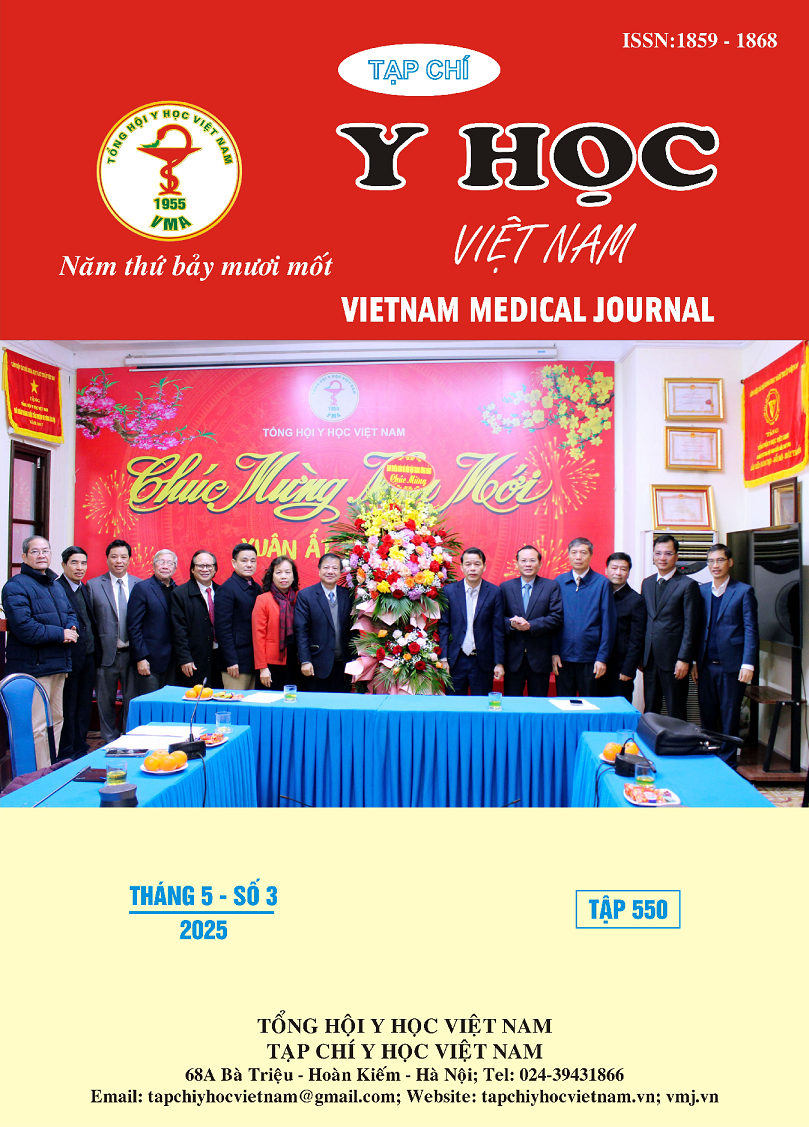DIGESTIVE SYMPTOMS AND NUTRITIONAL CHARACTERISTICS OF THE ELDERLY PEOPLE TREATED AT HANOI MEDICAL UNIVERSITY HOSPITAL IN 2023-2024
Main Article Content
Abstract
Objective: The study aims to describe some digestive symptoms and nutritional characteristics of the elderly treated at Hanoi Medical University Hospital in 2023-2024. Methods: Cross-sectional descriptive study. Results: The study was conducted on 264 patients over 60 years old, of which 147 participants were male (55.7%), the rest were female (44.3%). The average age was 69.4 ± 7.2 years old. The number of elderly patients with less than 3 diseases was 83.7%. Most patients had normal nutritional status (72.4%), the rate of malnourished patients was 15.2% and overweight and obese patients had the lowest rate (12.5%). Up to 60.2% of elderly patients had symptoms of indigestion; 33.7% had symptoms of belching. Symptoms of nausea and vomiting had the lowest rate (16.4%). The proportion of female participants with a total SNAQ score ≤14 was 45.3%, higher than that of male participants (33.3%). Subjects at risk of malnutrition, malnutrition according to MNA with a total SNAQ score ≤14 accounted for 42.2%, higher than the non-malnourished group (21.7%), the difference was statistically significant (OR: 2.63; 95%CI: 1.23-5.63; p=0.01). The rate of digestive disorders in female participants was higher than in male participants. Specifically, 64.1% of female participants had indigestion, higher than that of men (57.1%). The rate of belching in women was 38.5% higher than that of men (29.9%). Nausea and vomiting symptoms were 21.6% higher in women than in men (12.2%) with a statistically significant difference (OR: 2.05; 95%CI: 1.05-3.98; p<0.05). Conclusion: The study showed that the elderly treated at Hanoi Medical University Hospital still had a significant rate of malnutrition (15.2%), especially in women. Common gastrointestinal symptoms included indigestion, belching and nausea/vomiting, with a higher rate in women than in men. Appropriate nutritional screening and intervention measures are needed to improve the health of the elderly.
Article Details
Keywords
digestive symptóm, elderly people, Hanoi Medical University Hospital
References
2. Già hóa dân số và người cao tuổi ở Viêt Nam: thực trạng, dự báo và gợi ý chính sách. UNFPA Vietnam. Published April 19, 2016. Accessed October 17, 2023.
3. Iwasaki M, Motokawa K, Watanabe Y, et al. A Two-Year Longitudinal Study of the Association between Oral Frailty and Deteriorating Nutritional Status among Community-Dwelling Older Adults. Int J Environ Res Public Health. 2021;18(1):213. doi:10.3390/ijerph18010213
4. Bhutto A, Morley JE. The clinical significance of gastrointestinal changes with aging. Curr Opin Clin Nutr Metab Care. 2008;11(5):651-660. doi:10.1097/MCO.0b013e32830b5d37
5. Soenen S, Rayner CK, Jones KL, Horowitz M. The ageing gastrointestinal tract. Curr Opin Clin Nutr Metab Care. 2016;19(1):12-18. doi:10.1097/ MCO.0000000000000238
6. Salles N. Basic mechanisms of the aging gastrointestinal tract. Dig Dis Basel Switz. 2007;25(2):112-117. doi:10.1159/000099474
7. Abd Aziz NAS, Teng NIMF, Abdul Hamid MR, Ismail NH. Assessing the nutritional status of hospitalized elderly. Clin Interv Aging. 2017; 12(null):1615-1625. doi:10.2147/CIA.S140859
8. Nguyễn Thị Lâm Oanh, Hoàng Thị Bạch Yến, Hoàng Anh Tiến (2021). Tình trạng dinh dưỡng và thói quen ăn uống của bệnh nhân cao tuổi điều trị nội trú tại Khoa Nội Tim mạch, Bệnh viện Trường Đại học Y - Dược Huế. Tạp Chí Tim Mạch Học Việt Nam. 2021;(98):83-90. doi:10.58354/ jvc.98.2021.99


